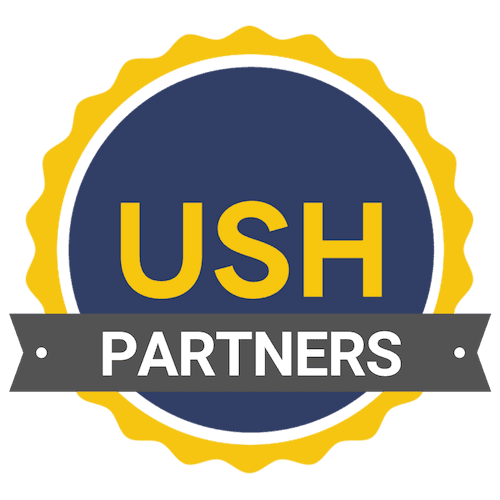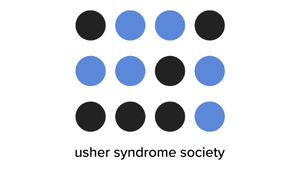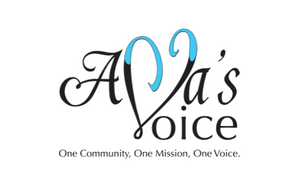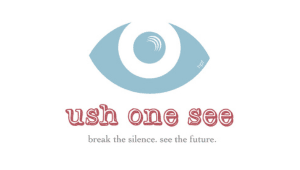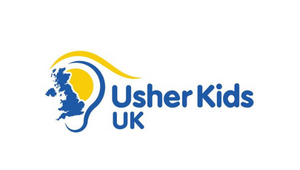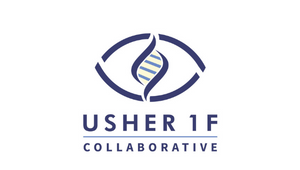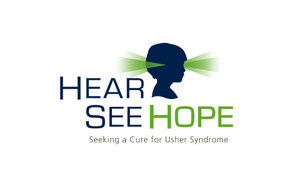Grounded in Science
A balance of research news and well-being for the Usher syndrome community.
We are excited to share some great scientific and research updates this month, along with an article highlighting the importance of hearing health. Last month, those in the USH Trust had access to our webinar hosted with Sepul Bio regarding the USH2A LUNA clinical trial. We will share an accessible recording and transcript of this webinar with USH Trust members soon.
The strength of our partnership with Sepul Bio is speeding up the recruitment process for LUNA, aiming to enroll 81 trial participants by the end of the year.
In addition to these research advances, our USH Champions are making their voices heard on Capitol Hill this week, bringing our national community sign-on letter to their constituent meetings with the offices of Members of Congress. We are thrilled to share that this letter has received over 1,060 signatures from members of the Usher community and supporters from all 50 states and DC. Thank you for using your voice to advocate for Usher syndrome research funding!
USHER SYNDROME DATA COLLECTION PROGRAM
As the world continues to get to know the individuals living with Usher syndrome, it's a great time to join the Usher Syndrome Data Collection Program - the USH DCP - so researchers can better understand this diagnosis. If you'd like additional support enrolling, please reach out to Yael Saperstein, our Community Enrollment Coordinator for the USH DCP. Yael is an expert on the enrollment process, accessibility, and guiding new participants every step of the way. Contact Yael here: y.saperstein@usher-syndrome.org.
Research Spotlight: ARVO 2025 Usher Syndrome Research Updates
The annual Association for Research in Vision and Ophthalmology (ARVO) conference was held in Salt Lake City this May. This conference is attended by over 10,000 people and brings together scientists, physicians, and patient advocates to share the latest scientific advances and clinical results about vision research. Several researchers who are studying Usher syndrome presented their latest findings at ARVO this year. The work they presented is summarized briefly below, with the full list of presented research available here.
USH1 results presented at ARVO 2025:
- Francesca Simonelli and colleagues report early results from the LUCE-1 trial, which is a Phase I/II trial for a MYO7A dual vector gene therapy for USH1B. The goal of this trial is to determine if the therapy is safe and effective. Although only two patients have been treated so far, Dr. Simonelli reported that there have been no safety concerns.
Jennifer Lentz, Madeleine Pickens, Bhagwat Alapure, Dongjoon Kim, and their colleagues reported several results related to their work on USH1C. They are working on a natural history study which is focused on understanding how vision changes over time for individuals with USH1C. This study will guide the design of future clinical trials for USH1C. In addition, they have created a mouse model which has a mutation in USH1C that is commonly found in Acadian populations of south Louisiana and Canada (USH1C c.216G>A). This has helped them test two potential genetic treatment strategies for USH1C: one of these strategies is effective only for the mutation responsible for USH1C in the Acadian populations of south Louisiana and Canada, while the other strategy could treat all subtypes of Usher Syndrome. To test which of these strategies is the most effective, both were tested in a mouse that has mutant USH1C. All of these results will help guide Dr. Lentz and her colleagues in designing future clinical trials.
- Maryna Ivanchenko, Xinlan Chen, and their colleagues have created a small version of PCDH15 that is able to fit inside an adeno-associated virus (AAV) as a potential USH1F treatment. Previously, they showed that this mini version of PCDH15 was partially effective in restoring hearing in mice with mutant PCDH15 (link to our Science News update about this here). Now, they have delivered this mini-PCDH15 gene therapy to zebrafish that have mutant PCDH15 and showed that it was able to preserve photoreceptor health and morphology. They also tested the therapy in monkeys and reported that mini-PCDH15 was expressed well in photoreceptors and that the treatment was safe. These findings will pave the way for future clinical trials.
Click here to read the full list of USH1 summaries.
USH2 results presented at ARVO 2025:
Yue Dai and Qin Liu tested if a gene editing strategy could be used to “cut out” a mutated portion of USH2A and allow a slightly shorter but healthier version of the protein to be produced. This strategy could be useful for individuals with mutations in exon 13 of USH2A (which between 30-48% of individuals with USH2A have). This therapy worked well when tested on cells grown in a dish, and is currently being tested in mice.
Jun Yang and colleagues used retinas from cows in order to identify which other proteins physically interact with certain USH2 proteins (Usherin, which is mutated in USH2A, and ADGRV1, which is mutated in USH2C). These results help scientists understand the reason photoreceptors become unhealthy in USH2A and USH2C.
Jesus Santiago Vidaurri-Martinez and colleagues used non-invasive imaging techniques to monitor the retinal health of several children with USH2A between the ages of 0-10. They hope that this information will help us to better understand the timing of retinal degeneration and vision loss in USH2A.
Click here to read the full list of USH2 summaries.
USH3 results presented at ARVO 2025:
Ronald Gregg, Susan Bolch, and their colleagues created a pig with mutant USH3A. This is useful because there are currently very few animal models for USH3A, making it difficult to study. Retinas from pigs with mutant Clarin1 seem to be more vulnerable to mechanical stress. Overall, these pigs will help researchers understand how vision loss in USH3A progresses and will be useful for testing potential USH3A therapies.
Click here to read the full list of USH3 summaries.
Check out our Current USH Research page specific to USH subtype as well as gene-independent therapeutic approaches.
Clinical trials need participants. Let’s make sure that there’s a robust pool of potential participants when researchers are ready. Join the USH Trust today for the future of USH.
In Case You Missed It: Science News Feature
Regeneron gene therapy improves hearing in 10 children with rare form of hearing loss
2/24/2025: Scientists at Regeneron have created a gene therapy, DB-OTO, that uses a harmless virus (AAV) to deliver a healthy copy of the OTOF gene, a gene needed for hearing, into the inner ear. In a recent trial, this potential therapy improved hearing in 10 out of 11 children born with severe deafness due to OTOF mutations.
How It Works
The OTOF gene makes a protein called otoferlin, which helps inner ear cells send sound signals to the brain. Genetic changes in OTOF stop this protein from working, causing deafness. DB-OTO uses an AAV (a virus modified to carry healthy genes) to deliver a working OTOF gene into ear cells during surgery. This helps the cells produce otoferlin again, restoring hearing.
Trial Results
- 12 children (ages 10 months to 16 years) received DB-OTO. Nine had one ear treated; three had both ears treated.
- 10 of 11 kids showed better hearing at various sound levels, and three reached “nearly normal” hearing after six months.
- A baby treated at 10 months old began reacting to sounds within weeks and later recognized words like “mommy” and “airplane” without lip-reading.
Safety
The treatment was safe, and most kids responded well. All side effects (like dizziness or nausea) were mild and faded quickly.
What this means for the Usher syndrome community: Although DB-OTO targets OTOF-related deafness and not Usher syndrome specifically, this success is a major step forward for gene therapies that could help Usher patients. Usher syndrome involves errors in genes like MYO7A, USH2A, or CLRN1 that affect both hearing and vision. The AAV-based approach used here safely delivers healthy genes to replace faulty ones. This therapeutic approach could be adapted for Usher-related genes in the future.
DISCLAIMER: The Usher Syndrome Coalition does not provide medical advice nor promote treatment methods. USH Science News is intended to help summarize more complex literature for the community to use at their own discretion. As always, consult with your trusted healthcare provider if you have questions or concerns about your situation.
For more science news, check out our Science News page, organized by treatment approach and type of Usher syndrome.
ON WELL-BEING: The Impact of Hearing Health on Well-Being
By Robyn Culpepper, Au.D., CCC-A, F-AAA, ABA
Hearing loss is one aspect of Usher syndrome that affects each type and subtype.
Hearing loss at birth or during adolescence can disrupt abilities to understand conversations, have awareness of safety in different environments, decrease involvement in social activities, affect the ability to learn effectively while in school, and impact possible success in a career.
Even though there is a range of severity with hearing loss and Usher syndrome, once discovered, any type of hearing loss should be treated promptly. Hearing does not occur within the ears, it actually occurs in the brain. With hearing loss, treatment is highly recommended due to improved ability of the brain to process sounds, increased speech understanding, speech/language development, cognitive function, and social development.
Once hearing loss is discovered, a treatment plan is then initiated. Medical intervention, hearing aids, or cochlear implants are the typical treatments recommended. Medical intervention doesn’t typically work for Usher syndrome due to the type and severity of hearing loss. While treating hearing loss is a popular recommendation, it does not mean that someone is not able to engage in learning ASL and other forms of communication for their lifestyle.
Hearing devices are one resource that allow for improved communication and functionality in a world that is not made for those who are hard of hearing or Deaf.
Annual hearing tests allow for proper maintenance of hearing as accurately as possible.
Hearing aid adjustments and cochlear implant mapping are important for daily living. Our listening situations change consistently. If the hearing changes, adjustments need to be made to ensure proper amplification is occurring in all environments. Consistent use of amplification devices is recommended to ensure appropriate stimulation of the auditory pathways are always occurring within the brain.
Maintaining annual hearing tests leads to consistent monitoring of equipment working correctly. If a device is muffled, has battery drain, distortion, static, or cutting in and out, it is usually able to be repaired and allow for optimal success of hearing. If devices begin to fail when out at social activities, in school settings, sporting events, it is going to create an even larger challenge for someone to understand conversations due to already having hearing loss.
Without properly working devices, the impact of hearing loss can lead to isolation and depression in all ages. Safety also becomes a concern when equipment isn’t functioning at optimal levels, example: out running in a busy city, CI coil breaks and suddenly there is no sound from one side. How can we decipher what direction a car horn is coming from or can we hear a car about to turn onto the same road that we are about to cross? Daily or weekly cleaning can help ensure proper functionality of amplification devices. While hearing loss with Usher syndrome is not able to be corrected, it can.
About Robyn: “I live in Texas with my husband and son, and work as an Audiologist with Usher syndrome. I enjoy the outdoors, going to the lake, and being with my family and friends.”
DISCLAIMER: The information and resources on this website are provided for educational and informational purposes only and do not provide medical or treatment advice. Check out our mental health resources page on our website. As always, consult with your trusted healthcare provider if you have questions or concerns about your situation.
USH Tip
(Send your USH Tips to info@usher-syndrome.org.)
Cooking with low vision can be a learning curve. There are many different techniques and tools to try. Here are the top 10 items from The Blind Kitchen to consider: click here to see the list.
Have you joined the Usher Syndrome Coalition Discord Community Server? It’s a safe place for the community to connect with each other. Join here: https://discord.gg/czwHGaDu7W

